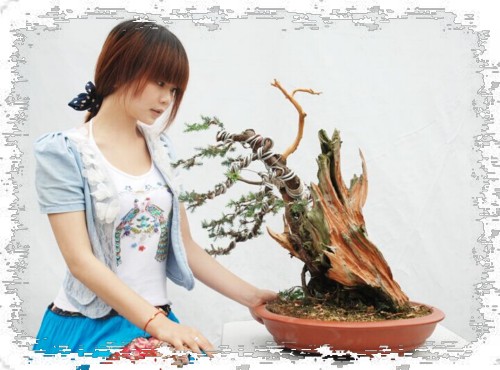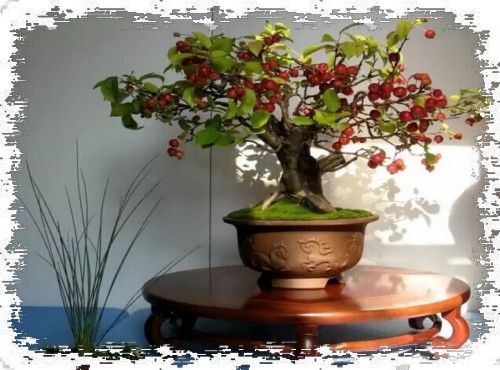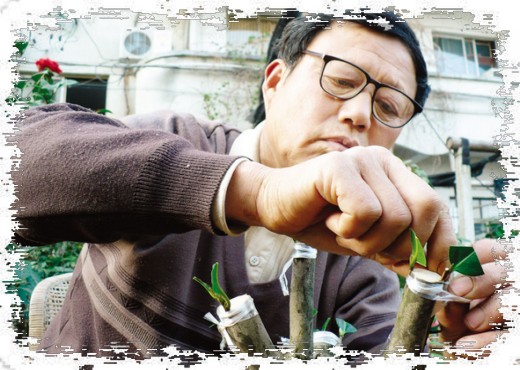Production technology of juniper bonsai
Juniper, also known as juniper, cypress, juniper, is an evergreen tree of the genus Sabina of the family Cypress, with brown bark, longitudinal grooves and strip peeling off. Branches spread upward, branchlets drooping, trigonous, green at first, then reddish brown. The leaves are verticillate, the leaves are needle-shaped, the apex is sharp, the surface is slightly concave, the midrib is slightly raised, the leaves are green, and there is a white stomatal band on each side, which is integrated at the apex of the leaf.

Juniper trunk vigorous and simple, green leaves, evergreen, soft branches, easy to shape, is a good tree species for bonsai production. But juniper prefers a warm, humid and sunny environment, slightly resistant to shade, cold and drought. The bonsai can be maintained in a sunny and well-ventilated place outside. Do not overdo the fat and water, lest the plant will grow too long and affect the beauty of the tree. Small bonsai is turned every 2 years, and large bonsai is turned every 4 to 5 years, usually before sprouting in spring. When turning the basin, diseased roots, rotten roots and part of the old roots are cut, dense roots are cut, and the old soil of 1 beat 2 to 1 pound 3 is removed. Replace it with new fertile soil and replant it.
Juniper used to make bonsai can be propagated by sowing, cutting, striping and other methods, or you can choose to grow for many years, the plant is short, the shape of the stump is old and Qiu qu to make bonsai. The excavation and transplanting is mostly carried out before sprouting in winter or early spring, and the unnecessary branches are cut off according to the shape of the stump before transplanting. When digging, the main root will be truncated, leaving more lateral root, fine root and fibrous root. It is best to transplant with soil balls, and for bare-root plants, it is necessary to do a good job of moisturizing and keeping fresh roots. First planted in the plain sand to raise the billet, the number of large can be planted in the ground, when the number of small or residential buildings can also be potted.
After planting, the soil is compacted, watered and sprayed with water, and the plant is covered with a transparent plastic film to keep warm and wet. With the increase of temperature in spring, the stump will sprout gradually. when the temperature in the plastic film is too high or the humidity is on the low side, one corner of the plastic film can be ventilated and cooled, and water can be replenished in time, but the soil cannot accumulate water to avoid retting the roots. when the plant grows steadily, the plastic film should be removed gradually. The surviving stumps can be allowed to grow in the first year, and do not model, and then move into the loose, breathable, well-drained sandy soil in the spring of the second year.
For young juniper trees of sowing, cutting and striping propagation, metal wire can be used to make use of the original shape of the trunk and processed into different forms of bonsai, such as single dry type, oblique dry type, curved dry type, facing water type, cliff type, stone-attached type and so on. The shape of the old pile that has been growing for many years varies from tree to tree, with reference to the cypress form in nature and the ancient cypress in painting, using the method of coarse binding and fine cutting to show the old, simple and vibrant grace of the cypress.
Juniper in Panzha often with wire edge winding, twisting, side bending, some people call it "twisting tendons to bone method". When banding the main branch, you should press down along the twisted direction of the wire to prevent the base from cracking. When the wire begins to be strangled into the branch, the wire should be removed in time, and if the shape does not meet the requirements, it can be re-banded to avoid scars. The old stump of juniper can also be peeled off part of the bark along the fiber of the bark, coated with stone-sulfur mixture, and made into "Shili stem" or "divine branch" to make it old and clumsy. When peeling, it is necessary to twist along the waterline of the stump in order to achieve the artistic effect of "originating from nature and higher than nature".
During the growing period, keep the basin soil moist, watering "do not dry, watering thoroughly", do not pour "half of the water", spray water to the leaves when the air is dry, in order to increase air humidity and make the leaves fresh, but pay attention to drainage on rainy days. The mature dilute liquid fertilizer is applied at the end of April and the beginning of September every year. Winter in the cold room or even buried in the outdoor shelter from the wind and the sun to winter, do not pour too much water. Pruning and shaping of juniper bonsai should be carried out in winter, cutting off excess branches, branches with poor angles and other branches that affect the shape of the tree. for over-long branches, they can be heart-picked during the growing period to promote new buds and make the branches and leaves dense.
Time: 2019-05-26 Click:
- Prev

Production method of Hawthorn bonsai
Hawthorn, also known as Shanlihong, Hawthorn fruit, is a deciduous shrub or small tree of Hawthorn of Rosaceae. The plant is much branched, the bark is dark brown, the branches are unarmed or less prickly, the leaves are triangular-ovate or rhombic-ovate, the leaves are dark green and glossy, and the edges are sparsely serrated. Corymbose inflorescences, drawn from branch ends or upper leaf axils
- Next

The method of making bonsai quickly-- grafting technique
Generally speaking, bonsai production, as little as a few years, as many as decades or even hundreds of years, may not matter for ordinary hobbies, but when we want to use bonsai as an industry to maintain our lives, it may be a myth. More of us hope to have both beautiful enjoyment and income when making bonsai.
Related
- Fuxing push coffee new agricultural production and marketing class: lack of small-scale processing plants
- Jujube rice field leisure farm deep ploughing Yilan for five years to create a space for organic food and play
- Nongyu Farm-A trial of organic papaya for brave women with advanced technology
- Four points for attention in the prevention and control of diseases and insect pests of edible fungi
- How to add nutrient solution to Edible Fungi
- Is there any good way to control edible fungus mites?
- Open Inoculation Technology of Edible Fungi
- Is there any clever way to use fertilizer for edible fungus in winter?
- What agents are used to kill the pathogens of edible fungi in the mushroom shed?
- Rapid drying of Edible Fungi

